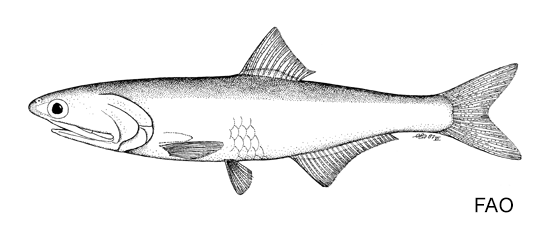| Engraulidae (Anchovies), subfamily: Engraulinae |
| 17.9 cm SL (male/unsexed); max.weight: 89.0 g |
|
pelagic; freshwater |
| Western Central Atlantic drainage (Amazon system, from Rio Mamoré in Bolivia to Manaus, Brazil including the Juruá and probably other tributaries). |
|
Dorsal spines (total): 0-0; Anal spines: 0-0; Anal soft rays: 20-22. Body slender, oval in cross-section. Snout long and pointed; maxilla short, tip bluntly rounded, not reaching to front border of pre-operculum, not projecting beyond tip of second supra-maxilla; teeth in jaws minute or absent. gill rakers long and slender, absent on face of third epibranchial. Dorsal fin origin at about midpoint of body; anal fin origin under last dorsal fin ray (Ref. 189). Olive above, silvery on sides and below. Snout blackish above. Fins pale orange; caudal rays blackish at tips (Ref. 37032). |
| Occurs in middle and upper reaches of rivers. The numerous and rather long gillrakers armed with fine setae, together with the very long and highly coiled gut suggest a microplanktonic diet. More data needed. |
|
Least Concern (LC); Date assessed: 06 March 2017 Ref. (130435)
|
| harmless |
Source and more info: www.fishbase.org. For personal, classroom, and other internal use only. Not for publication.
